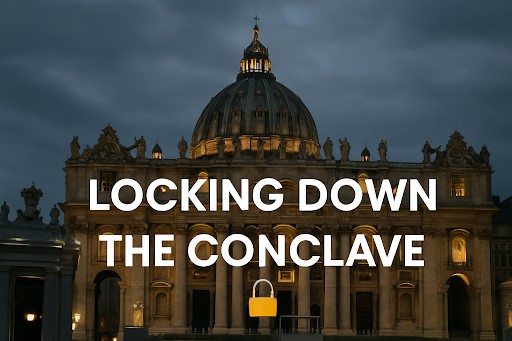You think keeping a secret in today’s world is tough? Try running one of the most important elections on the planet while dodging drones, AI surveillance and a smartphone in every pocket.
When Pope Francis passed away, the Vatican went into immediate lockdown mode to protect the conclave, the centuries-old process where cardinals vote to elect the next pope. Let me tell you, the security isn’t just tight. It’s basically a Tom Clancy novel on espresso.
Phones off, blockers on
Remember 2005, when the Vatican politely told cardinals, “No flip phones, please”? Adorable. Today, the Gendarmerie (the Vatican’s police force) runs an electronic warfare squad.
The moment the doors close, they flip on broad-spectrum signal jammers. Wi-Fi? Dead. Bluetooth? Buried. AirTags? Technological dust. Directional antennas flood every window and rooftop gap just in case.
Before the jammers fire, tech crews sweep rooms with nonlinear junction detectors (handheld wands that sniff out hidden circuits) and spectrum analyzers hunting rogue signals. They sweep again after the cardinals get in, and again once voting starts. Every person and everything gets inspected three times, from clothing to pens, crosses, rosaries and eyeglass frames.
Windows that stare back
Satellites can read a license plate from orbit, and AI lipreading can turn shaky long-lens video into a full transcript. The Vatican’s answer is dual-layer privacy film: a metallic, TEMPEST-rated laminate.
It blocks 99 percent of light and nearly all infrared. From outside, every window looks like a black mirror. Inside, cardinals see only a dull gray glow.
Thinking “just crack it open for fresh air”? Six Swiss Guards will somersault in like Cirque du Soleil. Magnetic sensors scream if a window budges more than a quarter inch. Cardinals aren’t even allowed to look outside the windows during the conclave.
Guarding the smallest country
Vatican City covers just 0.44 km² (roughly 0.17 sq mi). It’s about the size of a smaller 18-hole golf course, but its security grid rivals a major airport. Deep below St. Peter’s Square, a command center watches 650-plus 4K cameras, microwave fences and RF-triangulation arrays that flag any surprise transmitter.
Continue reading →
